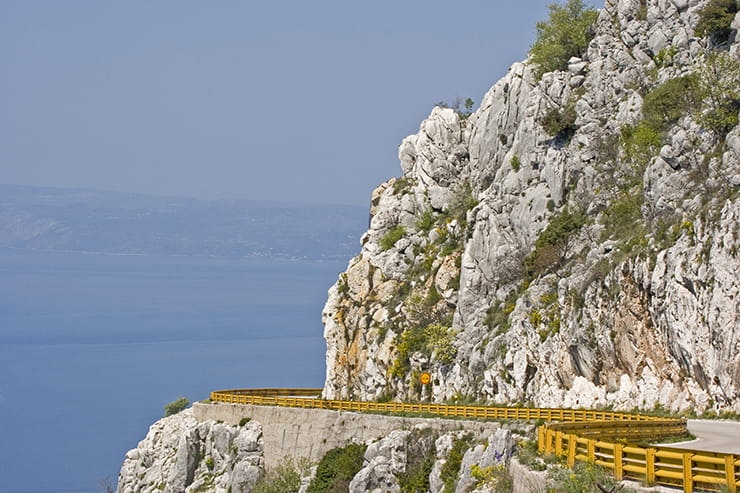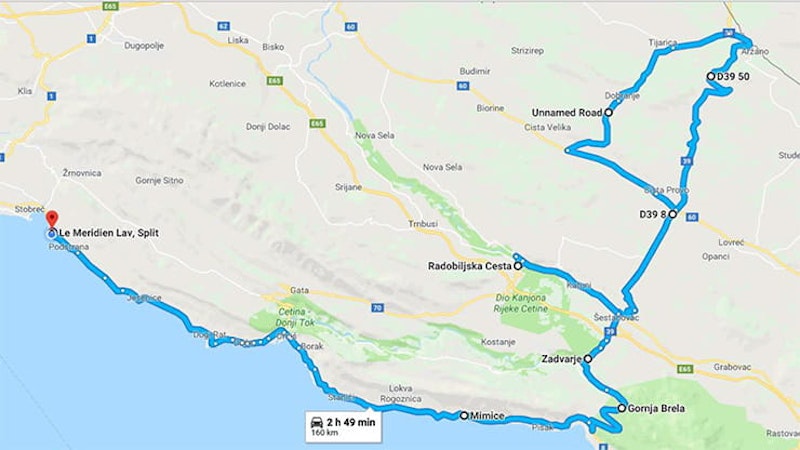Why you must ride Croatia, and how to do it
By John Milbank
Consumer Editor of Bennetts BikeSocial
03.05.2018
If you want to experience incredible roads, featuring awesome mountain switchbacks and the most beautiful coastal views, we strongly recommend you ride Croatia.
But don’t hang about – it’s a country that’s rapidly becoming the place to go on holiday. The airport in Split is expanding and hoteliers are frantically looking for more plots to cater for the expected exponential growth.
Food is relatively cheap, the locals welcoming, and the vibe extremely relaxed. You could ride there, and it’d be the trip of a lifetime, but other options include using BikeShuttle to get your machine to Geneva, then crossing the Alps to skip a day or so crossing France. Or for a big adventure, you could get your bike taken to Bulgaria with www.bulgariabikeshipping.com, then ride home through Croatia.
Perhaps the easiest option, and one that would give you a truly awesome experience, would be to hire a motorcycle. We rode Croatia on Harley-Davidsons, and you can do exactly the same by searching for rentals all over the world at the Harley website.
While there are Harley-Davidson dealerships in Croatia, they don’t currently offer rental, but a quick search on the site shows two in Austria. We spoke to the closest – Harley-Davidson Kärnten MotoDrom in Klagenfurt, who confirmed that their rental agreements allow riders to travel across borders. You could have an incredible trip riding through Slovenia and into Croatia, without the long haul all the way from the UK.
Where to ride in Croatia
Mototrip Tours, has some of its favourite roads listed, but the coastal scenery of Croatia is sublime. During the launch of the new Iron 1200 and Forty Eight Special we rode from Split, through beautiful Omiš, then through Gornja Brela on the 39, up to Aržano on the Bosnian border.
We also did a loop from Split through Sinj, Vrlika, Knin, Kistanje and down to Šibenik then back along the coast.
Ultimately, the roads are generally beautiful (even the motorways), and very quiet at the end of April when we went. Temperatures were around 23°C, but the average at this time of year is 13°C. June is when the tourist season really picks up, and you can expect the hottest temperatures (average 25°C) in July. April will typically have eight rainy days in the month, dropping to seven in June and five in July. In peak season, the sea is apparently wonderfully warm to swim in too.
A few quick clips from Croatia
Not convinced that Croatia is stunning place to ride? Check out some of the views from this Harley-Davidson press launch
Motorcycle law in Croatia
Ride on the right, overtake on the left.
Vehicles entering a roundabout have right of way.
Public transport (including school buses) have right of way.
School buses have priority when pulling away from a stop.
You must carry your driver’s licence, V5C and insurance documents at all times when riding (and driving), as well as your passport for identification.
You must carry a reflective jacket, which is to be worn in the event of an accident, and large fines can be issued if you don’t have spare bulbs (unless your bike has LED lights). However, local guide Zoran Naroz has told us that these rules only apply to cars.
You must wear a helmet, and it must cover your ears – the fine is 150 Euro.
If riding in a group, you should ride in line, not two abreast, though of course this is more of an issue with slower-moving machines.
Drink drive laws are slightly tougher than here – under 25 years old, the blood alcohol limit is zero. For riders and drivers aged 25 and over, it’s 0.5g per litre. In the UK it’s 0.8g (0.5g in Scotland). Breath tests can be carried out at random.
Between the last Sunday of October and the last Sunday of March, dipped headlights must be used during daylight hours – most modern bikes have their lights on by default, but this is worth knowing if you have an older machine, as the fine is 300HRK (around £35).
If you are stopped by the police, they can impose and collect on-the-spot fines, but you don’t have to pay immediately. In this case you’ll be issued with a ticket, and the fine must be paid within eight days at a post office or bank, but officers are allowed to confiscate your passport until the fine is paid.
In an emergency, dial 112 for an operator that can speak English (and Croatian and French) For the latest UK government’s travel advice, click here.
Do I need travel insurance?
Just like any holiday, a trip on a motorcycle – be it in the UK, Europe or beyond – can be ruined by delays, lost documents, illness and more. There are plenty of travel insurance options, but you need to make sure you get a policy that includes riding motorcycles, and if it does, that it's for bikes of the engine size you'll be riding (many only cover up to 250cc). At its most basic, you should look for insurance that provides cover for the following:
Medical expenses
Loss or theft of personal possessions
Lost or delayed luggage
Loss of your passport and other documents
Travel delays and disruptions
Having to cut your holiday short
In addition though, if you’re taking a motorcycle (or you're renting one while you’re away) be sure that your insurer will cover you for any medical expenses, should you have an accident. You must also think about where you’re riding – some policies won’t cover you if you’re trail or enduro riding, or if you’re on a race track. Remember – this isn’t about your bike being covered, it’s about your medical expenses, should the worst happen.
If you're only going away once, a single-trip policy will likely be all you need, but also consider an annual policy, which could extend to cover your family holidays too (a good insurer should also be able to offer cover for your whole family).
Speed limits in Croatia
As a guide and unless otherwise indicated, speed limits in built-up areas are 50km/h (30mph), 90km/h (56mph) on open roads, 110km/h (68mph) on dual-carriageways and 130km/h (80mph) on motorways.
Motorways and tolls in Croatia
Motorways are denoted by the letter A, followed by two digits. The signs are green, with a picture of a motorway on them. Many of the motorways have tolls, with two payment methods: In the ‘open toll’ system, you pay as you enter – you’ll usually find this on short sections of motorway, as well as bridges and tunnels. The ‘closed toll’ system gives you a toll card on entering, which is used to determine payment when you exit – you’ll find this on the larger motorways.
You can pay tolls with local or foreign currencies, using cash, credit card (Mastercard, Visa, American Express, Maestro and Diners), cheque or through a subscription if you’re going to be there a long time.
Other things to know
Most fuel stations on major roads and in the larger cities are open 24 hours a day, the others from 7am to 7 or 8pm, though in summer they tend to stay open until 10pm. All of them accept payment by credit card.
Watch out for dogs at the side of the road – they have a tendancy to run out in front of you at the last minute. Then dart back again for another attempt.
Croatian local and motorcyclist Zoran Naroz recommends avoiding the country between July 15 and August 15 when it's typically more than 35°C in the shade, potentially getting up to 50°C on the road. That and the fact that he says everywhere is full of tourists then.
Zoran goes on to say that his favourite area is the northern part of the Croatian coast line, but warns that it's more dangerous.
Where's biker friendly in Croatia?
A big thanks to Zoran for sharing this great website with locations of biker-friendly places to eat, accommodation, routes and more: https://viewer.mapme.com/moto-trip-croatia-bikers-friendly

